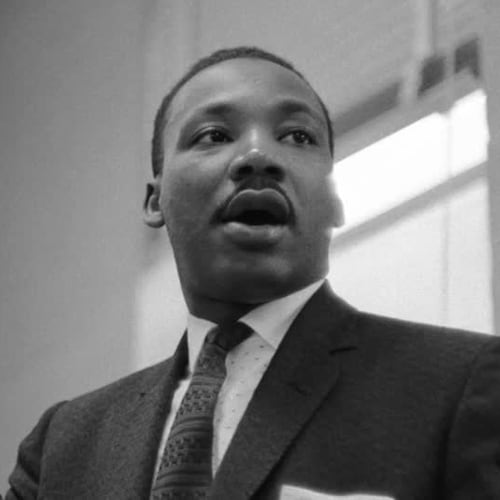This story was originally published in 2019. For our complete Black History Month coverage, click here.
As the second act of the hit Broadway musical “Hamilton” begins, Thomas Jefferson has just returned to Monticello to find a letter awaiting him.
“There’s a letter on my desk from the president/
Haven’t even put my bag down yet/
Sally be a lamb, darlin’, won’tcha open it?”
Sally, as most now know, was Sally Hemings, a woman Jefferson owned, having inherited her, her mother and siblings when his father-in-law, John Wayles, died in 1773. That was the year Hemings was born, although the month isn't known, according to the Thomas Jefferson Foundation.
Hemings’ mother, Elizabeth, gave birth to six children fathered by Wayles, including Sally. Yes, Sally Hemings and Martha Wayles Jefferson were half-sisters.
Hemings’ childhood was spent as a nursemaid to Jefferson’s daughter Maria. Little else is known about her life until she was 14.
Freedom in France
While Jefferson was "kicking ass as the ambassador to France," as the song "What'd I Miss" goes, he sent for Maria to join him and her sister, Martha, in Paris. Hemings was sent with Maria to be her domestic servant and maid. Hemings was 14. Jefferson was 44.
Paris at that time was home to more than 1,000 free Black residents, and Hemings, for the first time in her life, was legally free. She lived with Jefferson at his residence, even though his daughters “lived primarily at the Abbaye Royale de Panthemont, where they were boarding students,” according to the words of Madison Hemings, Sally Hemings’ son by Jefferson.
In Paris, Sally Hemings learned to speak French, occasionally attended social events with Jefferson’s daughters and was even paid about $2 some months.
"Their stay (my mother and Maria's) was about 18 months," Madison Hemings recounted in an 1873 interview. "But during that time my mother became Mr. Jefferson's concubine, and when he was called back home she was enceinte by him." In other words, she was pregnant.
“He desired to bring my mother back to Virginia with him but she demurred,” Madison Hemings continued. “She was just beginning to understand the French language well, and in France she was free, while if she returned to Virginia she was to be re-enslaved.”
Return to Monticello
Hemings did return to Virginia with Jefferson, but not without strings attached. She negotiated with the man who wrote the Declaration of Independence and secured independence for any children she would have. Jefferson gave his word, so a pregnant 16-year-old Hemings came back to Monticello in 1789. Not long after they returned from France, Hemings gave birth. “It survived but a short time,” Madison Hemings recalled.
Sally Hemings again performed the duties of a household slave.
"It was her duty, all her life which I can remember, up to the time of father's death, to take care of his chamber and wardrobe, look after us children and do such light work as sewing," Madison Hemings said.
Jefferson fathered all six of Sally Hemings’ children. Four of them — Beverly, Harriet, Madison and Eston — survived to adulthood.
“We all became free agreeably to the treaty entered into by our parents before we were born,” Madison Hemings continued in the interview.
Son Beverly and daughter Harriet were allowed to leave Monticello before being legally freed.
In 1847, former Monticello slave Isaac Jefferson described Sally Hemings as "mighty near white … Sally was very handsome, long straight hair down her back."
So it's understandable that Beverly and Harriet Hemings were able to live in white society and marry white spouses. They never spoke of their lineage for fear "of being tainted with African blood," according to their brother.
Sally Hemings gets recognition
In July 2017, historians found the room in Monticello where Sally Hemings lived.
The room, which was 14 feet 8 inches by 13 feet, was found next to Jefferson’s bedroom. It “is a windowless room, with a low ceiling and damp walls,” The Washington Post reported.
Nearly a year later, on June 23, 2018, the room was opened to the public, along with a small exhibit on Sally Hemings’ life and family. Hemings’ presence returned to Monticello 183 years after her death.
The room's proximity to Jefferson during his presidency — and Hemings having given birth to three of his children during that time — have fueled a recent discussion that Hemings, not Martha Wayles Skelton Jefferson, should be recognized as our nation's third first lady.
While it’s true that Hemings never lived in the White House, well, neither did Martha Jefferson. In fact, Martha Jefferson died in 1782, nearly 20 years before Jefferson was elected president.
Sally Hemings remained with Thomas Jefferson until his death on July 4, 1826.
After Jefferson
Jefferson’s will freed the remaining Hemings children — Madison and Eston. Although Sally Hemings was never officially freed, Martha Jefferson Randolph allowed her to leave Monticello when the former president died.
Sally Hemings lived with sons Madison and Eston in Charlottesville, Virginia.
The three "are listed as free white people in the 1830 census. Three years later, in a special census taken following the Nat Turner Rebellion of 1831, Hemings described herself as a free mulatto who had lived in Charlottesville since 1826," according to the Thomas Jefferson Foundation.
Sally Hemings died in 1835. The location of her grave is unknown.
About the Author
The Latest
Featured



